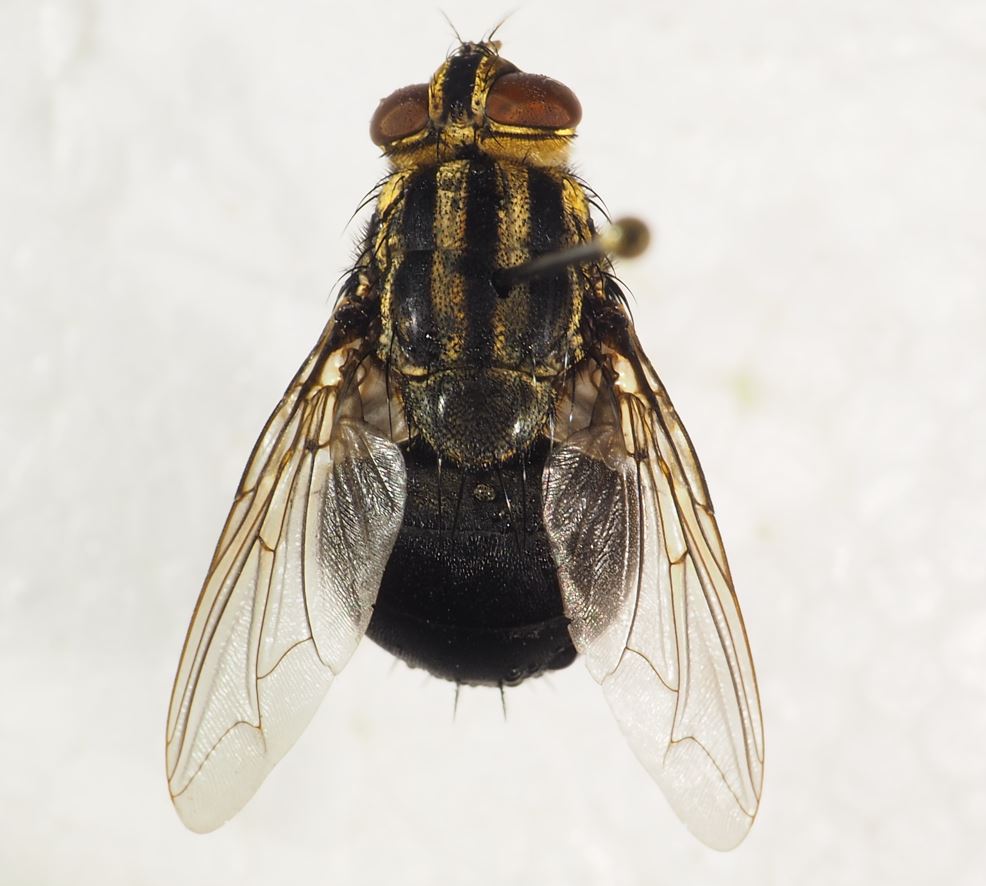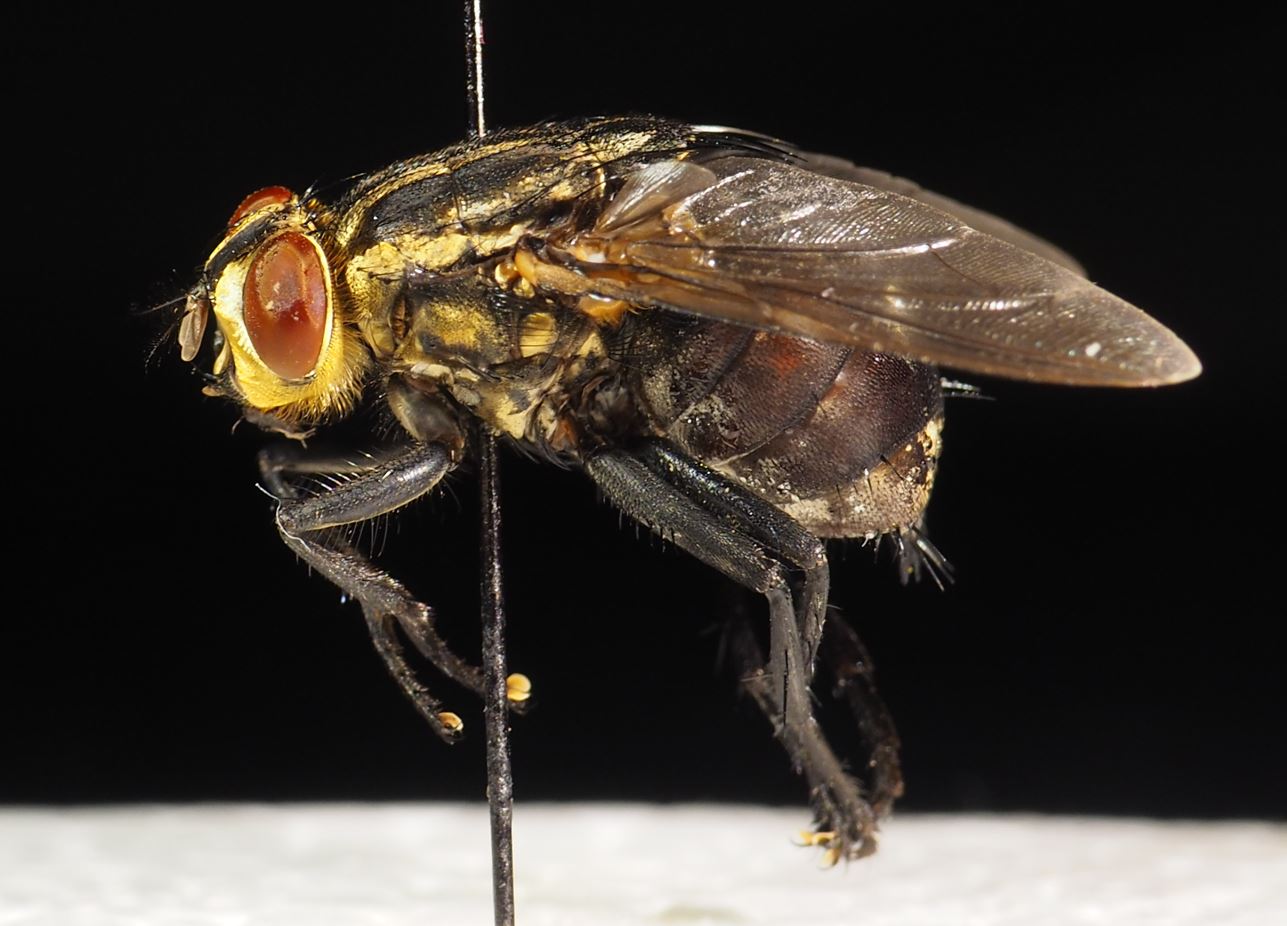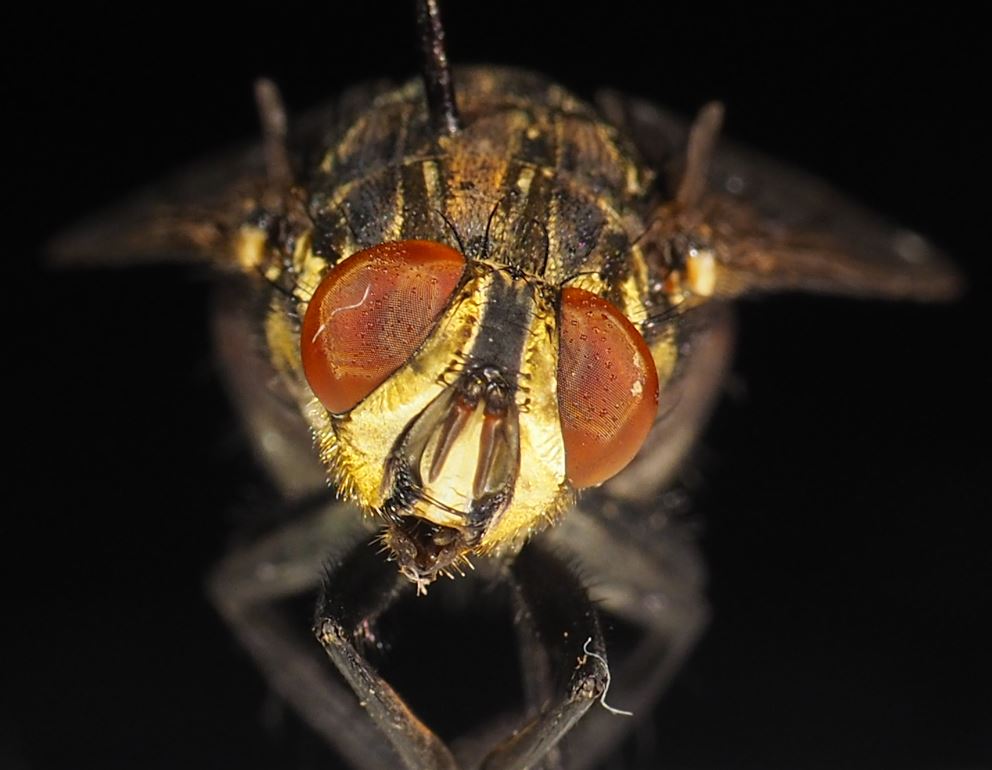Diptera.info :: Identification queries :: Diptera (adults)
Who is here? 1 guest(s)
|
Big big Sarcophagidae in French Guiana (neotropical)
|
|
| Bernard Perthuis |
Posted on 31-12-2023 01:44
|
|
Member Location: French Guiana Posts: 105 Joined: 28.04.18 |
Well, may be it is not the giant one but in my view it is very big. In French Guiana, city of Kourou, it probably had comitted suicide flying strong against a glass door and then fell on the concrete base. Body only 16 mm long; with wings it is 22 mm long. Please help with more precise ID if it is possible Bernard Perthuis attached the following image:  [85.1Kb] Edited by Bernard Perthuis on 31-12-2023 11:00 |
|
|
|
| Bernard Perthuis |
Posted on 31-12-2023 01:45
|
|
Member Location: French Guiana Posts: 105 Joined: 28.04.18 |
o
Bernard Perthuis attached the following image:  [118.79Kb] |
|
|
|
| Bernard Perthuis |
Posted on 31-12-2023 01:46
|
|
Member Location: French Guiana Posts: 105 Joined: 28.04.18 |
o
Bernard Perthuis attached the following image:  [68.51Kb] |
|
|
|
| Bernard Perthuis |
Posted on 31-12-2023 01:47
|
|
Member Location: French Guiana Posts: 105 Joined: 28.04.18 |
0
Bernard Perthuis attached the following image:  [88.09Kb] |
|
|
|
| Bernard Perthuis |
Posted on 01-01-2024 11:50
|
|
Member Location: French Guiana Posts: 105 Joined: 28.04.18 |
Could it possibly be a Lipoptilocnema ??? (genus close to Sarcophaga) This idea came to me when I saw photos of Lipoptilocnema koehleri on IN I have no access to the revision here : (Journal of Medical Entomology) 305315123_Taxonom...ts_Species Edited by Bernard Perthuis on 01-01-2024 11:52 |
|
|
|
| John Carr |
Posted on 01-01-2024 21:18
|
|
Super Administrator Location: Colorado, USA Posts: 10553 Joined: 22.10.10 |
I have that paper. The pictures look like typical Sarcophaga and not like your fly. The (sub)genus is known from eastern Brazil south to central Argentina. It has not been recorded from northern South America. A computer model thinks there is a little suitable habitat in Venezuela. Here is the generic diagnosis, external characters only. Frontal row of setae strongly diverging near lunule; arista plumose; male without orbital proclinate setae; one row of parafacial setae near the eye; facial ridge with setulae on lower 0.5–0.75; dark genal setae; pale post genal setae; 0–1 posterior acrostichal setae; postalar wall setulose; two pairs of lateral scutellar setae, and one pair of apical scutellars; three katepisternals; costal spine not developed (except L. savana); third costal sector without ventral setae; cell r4+5 open at wing apex... Edited by John Carr on 01-01-2024 21:21 |
| John Carr |
Posted on 01-01-2024 21:20
|
|
Super Administrator Location: Colorado, USA Posts: 10553 Joined: 22.10.10 |
I can add: The largest specimen of Lipoptilocnema seen by the authors is 13 mm long, body only. |
| Jump to Forum: |













